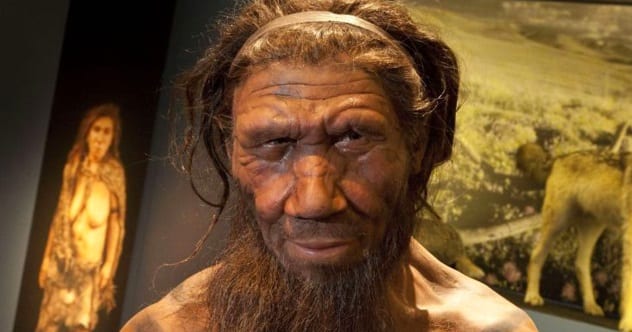Now Reading: 10 Fascinating Neanderthal Innovations That Impress Modern Humans
-
01
10 Fascinating Neanderthal Innovations That Impress Modern Humans
10 Fascinating Neanderthal Innovations That Impress Modern Humans

Fast Summary
- Neanderthals shared 98% of DNA with modern humans and are our closest ancient relatives.
- Contrary to the stereotype of “dumb cavemen,” Neanderthals demonstrated innovative skills through discoveries such as:
– Upcycling tools: Repurposing worn-out cave lion bones into stone-shaping retouchers (130,000 years ago).
– Sea diving: Harvesting shells from the ocean floor and evidence of “surfer’s Ear” from extended underwater activities (100,000 years ago).
– Tar creation: Synthesizing birch tar using advanced underground ovens for adhesives (200,000 years ago).
– Tool handles: Crafting grips made from bitumen and ochre for easier use of tools (120,000-40,000 years ago).
– Jewelry crafting: Making eagle-talon necklaces or bracelets indicating artistic flair (80,000 years ago).
– Face art: Painting human-like red markings on stones showing imagination and abstract thought (~43,000 years old).
– Protein-dense diets: Likely including maggots to supplement their high-protein consumption alongside meat.
– Textile mastery: Producing twisted yarns for nets or baskets using plaited fiber techniques (~42,000+ years old), which implies mathematical concepts.
– Advanced weapons technology: creating fire-hardened bone spears with adhesive bindings long before Homo sapiens arrived in Europe (~80,000 years ago).
– Fat extraction facilities (“fat factories”): Processing marrow-rich bones systematically at massive operational sites in Germany (~125,000-year-old revelation).
Read More: Link to article
Indian Opinion Analysis
These findings highlight that Neanderthals were remarkably adaptive and resourceful-traits essential for survival during harsh Ice Age conditions. Their technological ingenuity questions previous assumptions about their intellectual inferiority compared to Homo sapiens. By exploiting limited resources efficiently-through structured fat extraction or versatile tool-making-they shaped their environment thoughtfully rather than merely reacting to it.
There are broader implications beyond evolutionary comparisons: modern societies could learn valuable lessons from this sustainability-centered approach used by a seemingly primitive species. For India specifically-which is tackling questions around resource management amidst rapid urbanization-the sophisticated foresight displayed by Neanderthal “fat factories” or repurposing tools could inspire innovation under constraints.
The discoveries also challenge notions that creativity-be it jewelry-making or symbolic art-is exclusive to Homo sapiens. This offers a humbling reminder that human progress owes much not only to direct ancestors but adjacent hominid contributions influencing early evolution itself.
While engaging primarily for anthropological insights globally-a deeper understanding here contributes toward unlearning biases in historical narratives that may apply elsewhere too when assessing diversity among civilizations past or present facing extreme survival landscapes collaboratively-built success surprising out ingenuity tactical-execution .


























